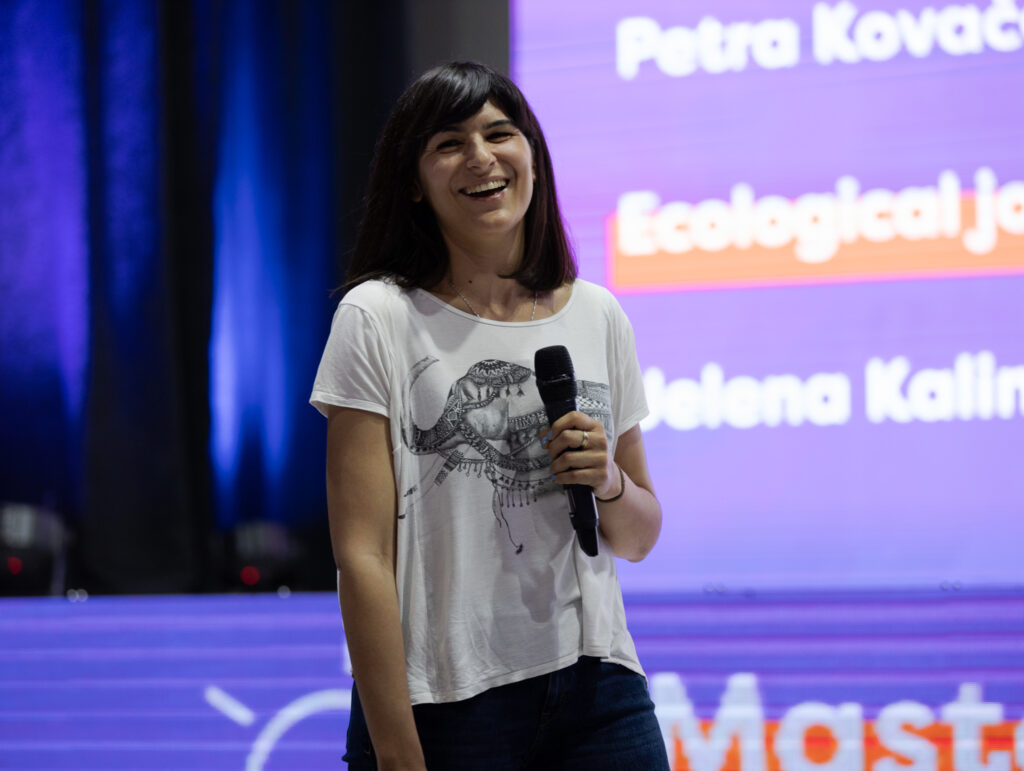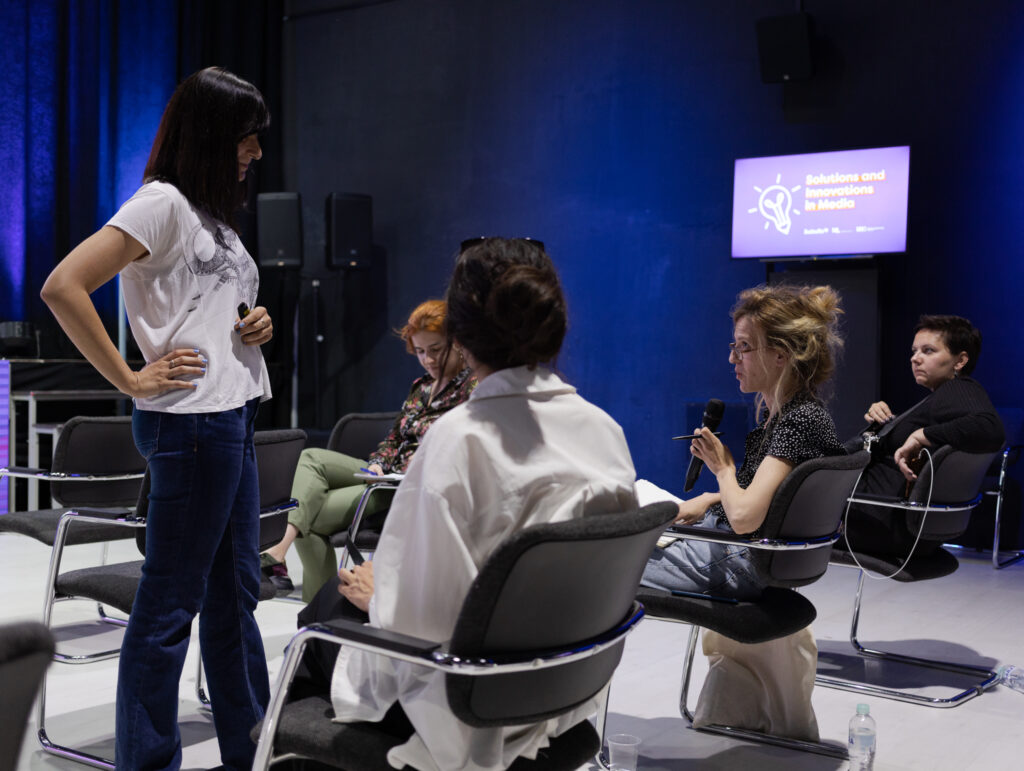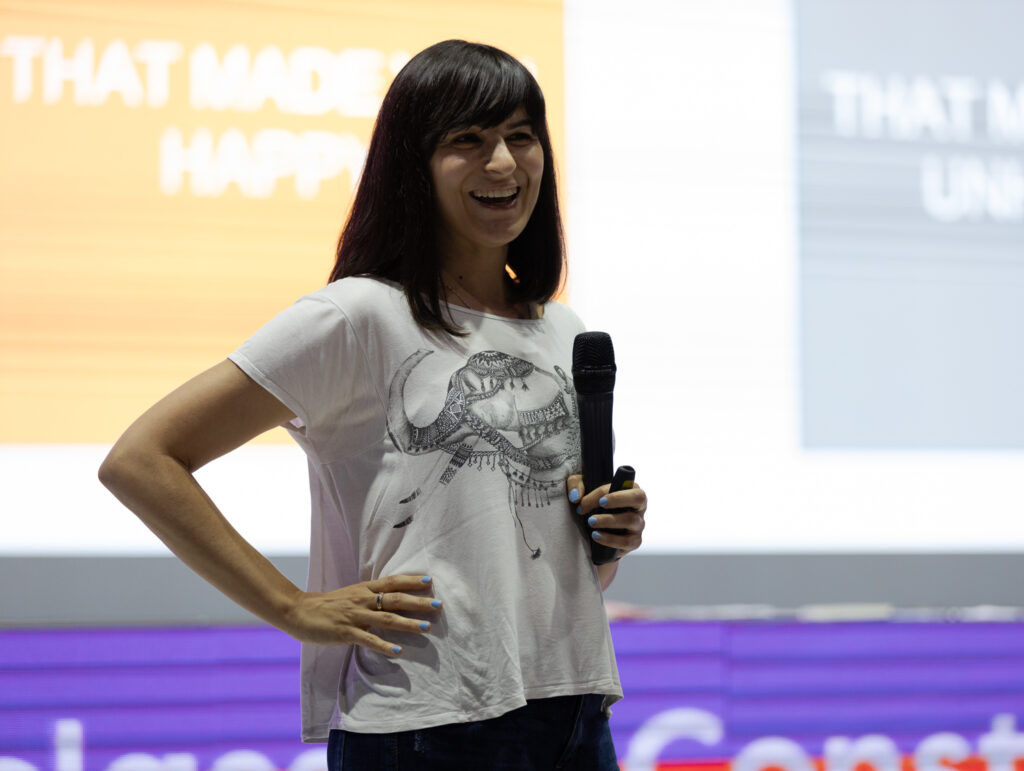The conference “Solutions and Innovations in Media” organized by Mediacentar Sarajevo and Citizens Association “Why not/Zašto ne” and supported by the embassies of the Netherlands in the Western Balkans region, was finalized with the master class on constructive criticism by Petra Kovačević, a freelance broadcast journalist and producer based in Zagreb, Croatia, who shared the importance of constructive journalism in the media sphere.

Author: Kristina Gadže / Photo: Vanja Čerimagić
The master class had a goal to share the key elements of constructive journalism, to include individual and group assignments and to look for the issues in journalism that prevent constructive journalism from being more available to the audience. Among these goals was for the audience to get the idea of constructive journalism and its practices and to incorporate the elements of constructive journalism in their future work.
The master class started with an exercise which showed that people usually find bad news faster than the good ones. “The good news is something you have to constantly search for”, Kovačević stated.
She explained that constructive news is about looking at what’s wrong and what journalists can do about it. She also mentioned that this type of journalism seeks to cover current affairs and news, adding solution action and future-oriented perspective, context and variety of sources. “It’s a more positive approach, but still journalistically rigorous”, she said. The main pillars of constructive journalism by the Constructive Institute, as Kovačević mentioned, are journalism for tomorrow, the ambition, the focus on solutions, the cover nuances and the promotion of democratic conversation.

Constructive journalism, as mentioned during this master class, has its elements which include finding the good things of someone who’s trying to solve a problem, future orientation, inclusiveness and diversity, empowering people, contact and co-creation which in the end creates socially responsible journalism.
Kovačević explained that the idea of constructive journalism started in Denmark, when they, according to their media analysis, started losing the audience. She mentioned Reuters’ Digital News which shows that the focus in the news is too negative, and that the audience is fed up with negative news, which is why some of them consciously avoid reading the news. At the conference, it was emphasized that the problem of the newsroom culture based on conflict, drama and victims is one of the key factors that slow down constructive journalism in the region.
During the conference, Kovačević quoted the inventor of constructive journalism, Ulrik Haagerup, who said that “constructive news is a wakeup call to a paralyzed media industry infected by cynicism”.

Kovačević said that news avoidance and decontextualized reporting, attempt to bring back journalism to its roots as a profession which informs, educates and creates space for critical thinking and decision-making are the reasons why people need this separate type of journalism.
“The point of constructive journalism is to be skeptical”, she said. Another huge problem regarding constructive journalism, as Kovačević mentioned, is the audience’s behavior towards constructive news because they rarely do any action after they read them: “They have positive feelings but when it comes to action, they still don’t do anything to change”.
She concluded that it’s important to include discussing constructive angles of a story at newsroom meetings because this still hasn’t become a part of the newsroom culture. She finalized her master class with sharing the examples of good constructive stories that are regularly published on BBC (Crossing Divides), Positive.news, The Guardian (The upside), and Squirrel App (available on Android and iOS).